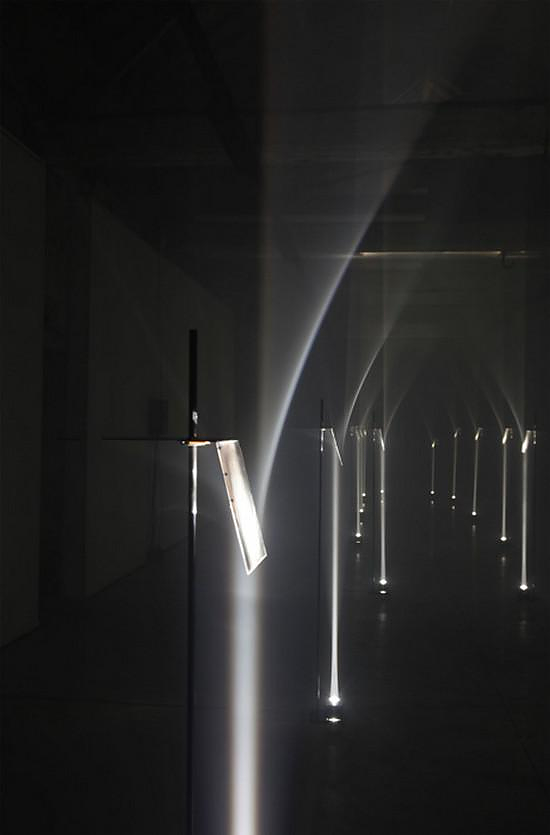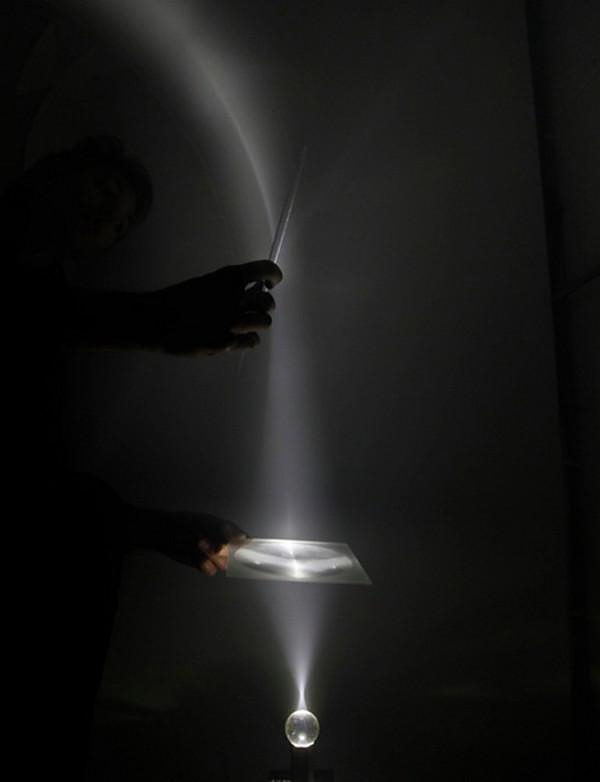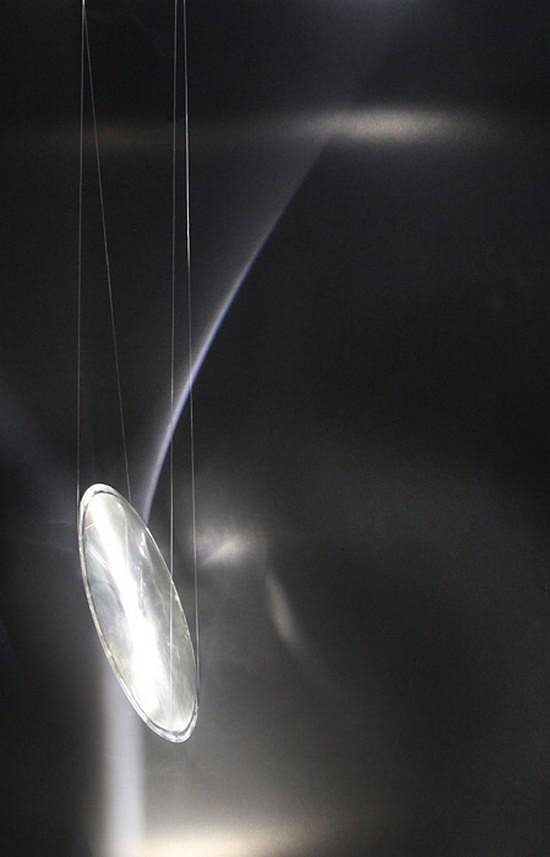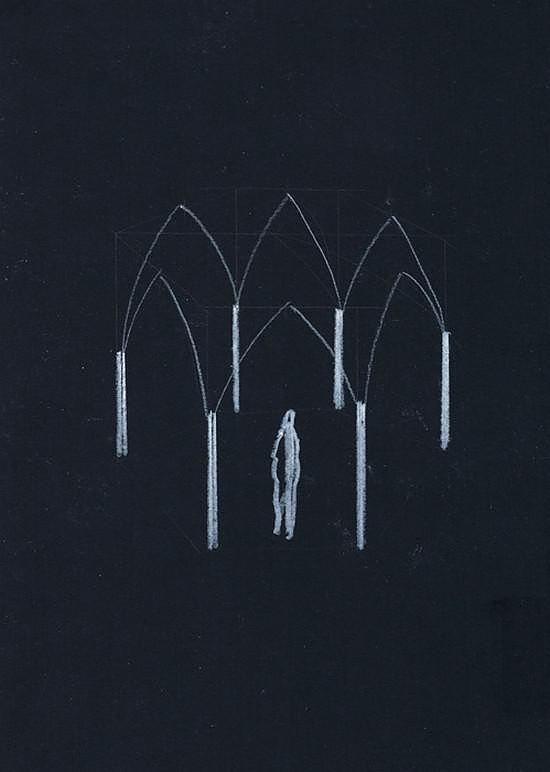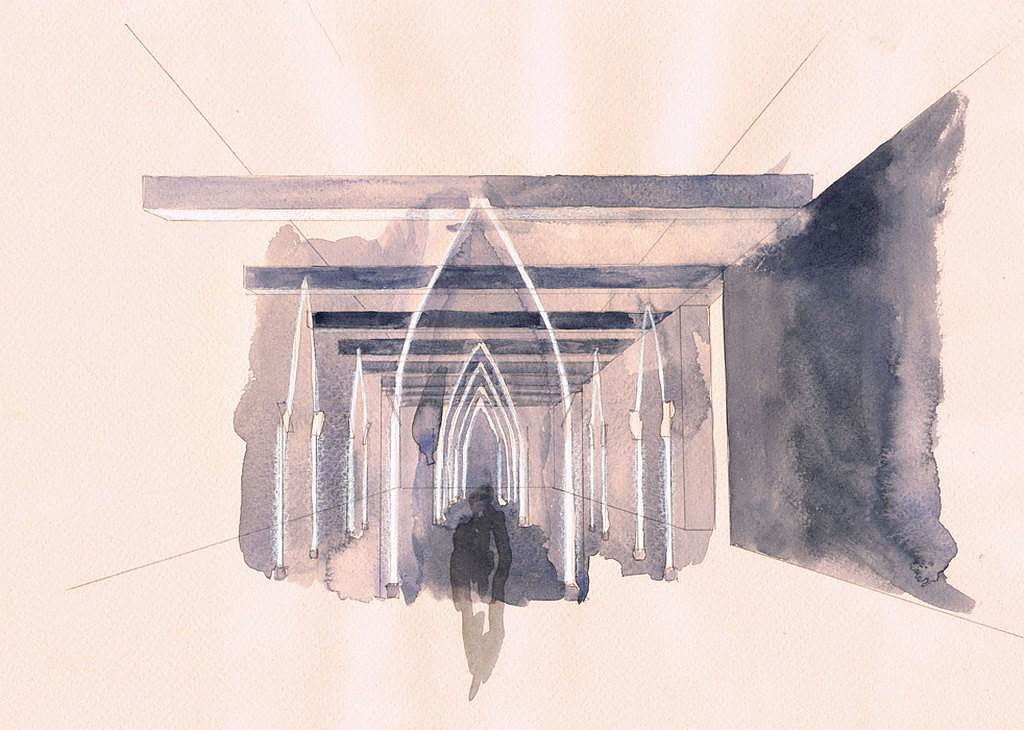The Arcades lighting installation by Troika is an impressive artistic installation that uses light beams to create architectural elements, more specifically an archway made of light.
The Arcades installation is part of a larger project entitled “future primitives”. With this unique project, Troika wishes to explore what is intangible and what is physical. It is a place specific art installation located in a former stable building in the historical town of Old Buda Island in Belgium. It was also part of the 2012 Interieur Biennale of Kortrijk. The artists are Conny Freyer, Eva Rucki (both from Germany) and Sebastien Noel (France), together they from the Troika design studio and they are based in London.
The Arcades lighting installation features 14 light columns of light in a row. Each column shines in thin bars before passing through a Fresnel lens that refracts the rays of light that travel through its focal point. In this way, the rays do not just change direction but bend hyperbolically to form the arches of Gothic architecture.
[quote text_size=”small”]
Effectively the lenses refract the light in a series of graduating angles, creating the illusion of curving light.
[/quote]
The overall result is very extraordinary as the light-arches form a perfect, intangible architectural element.
The experimental project Arcades by Troika combines the elements of science and philosophy articulated through intersecting disciplines of sculpture, architecture and art. The implanted luminous form engages in strong metaphysical dialogue with its surrounding volumes and offers a moment to reflect upon ethereal architecture. The viewer can thing about and explore the boundaries that define a space and ultimately, an experience.
“The arcade of light lies between the intangible and physical, the visible and the seemingly impossible. It asks the viewer to pause and contemplate the surrounding space whilst promoting openness rather than closure.” The designers explain.


